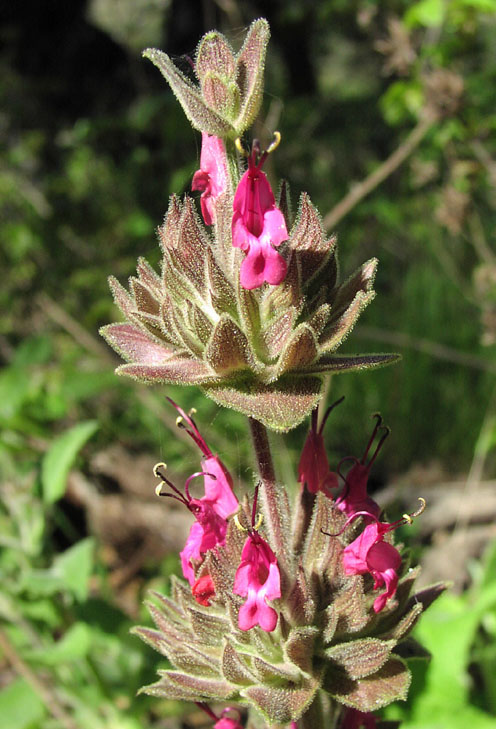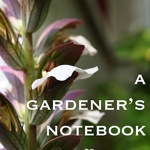Hummingbird Sage (Salvia spathacea) via BeWaterWise.com
A few months ago I was invited down the office of the Metropolitan Water District to meet a number of people involved in their BeWaterWise.com project to help reduce water usage in California. As part of their efforts, they focus on providing plant alternatives to water hungry lawns. Over the next several weeks, I will be highlighting some of their garden alternatives as part of this series. For more information on these plants and other water conservation ideas and programs, vist BeWaterWise.com. Follow the MWD on Twitter at BeWaterWiseH2O — Douglas

“Hummingbird sage” by Taken by Antandrus – en:Image:Hummingbird_sage.jpg. Licensed under Public Domain via Wikimedia Commons.
This hardy, small clumping sage is a magnet for hummingbirds because of its spikes of deep magenta owers. This sage prefers shade to partial sun and requires moderate water although its root system helps it to survive drought. — BeWaterWise.com
Salvia spathacea (pitcher sage or hummingbird sage) is a species of flowering plant in the family Lamiaceae, native to southern and central California growing from sea level to 610 m (2,001 ft). This fruity scented sage blooms in March to May with typically dark rose-lilac colored flowers. It is cultivated in gardens for its attractive flowering spikes and pleasant scent. — Wikipedia
- Hummingbird Sage (Salvia spathacea)at BeWaterWise.com
- Hummingbird Sage (Salvia spathacea) at Wikipedia
- Hummingbird Sage (Salvia spathacea) at San Marcos Growers
Previously in the Interesting Plant series:
- Seaside Daisy, Beach Aster (Erigeron glaucus)
- Toyon (Heteromeles arbutifolia)
- California Lilac (Ceanothus)
- Bigberry Manzanita (Arctostaphylos glauca)
- Douglas Iris (Iris douglasiana)
- Malva Rosa (Lavatera assurgentiflora)
- Baby Blue-Eyes (Nemophila)
- Coral Bells or Alum Root (Heuchera)
- Deer Grass (Muhlenbergia rigens)
- Echeveria ‘Lola’
- View all past “Interesting Plant” posts
Interesting Plant is a series from A Gardener’s Notebook blog and podcast that highlights the most interesting plants I find in my Internet and real-world travels — Douglas





